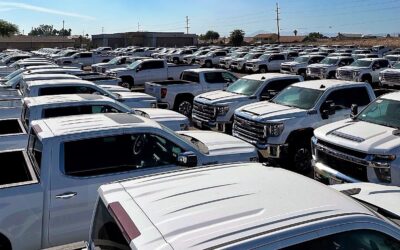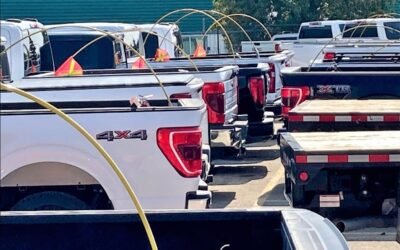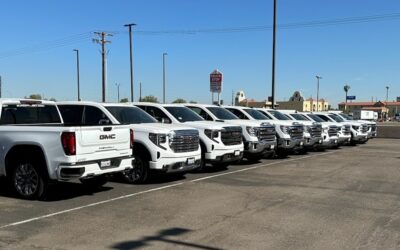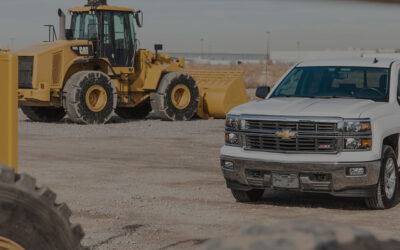CDL Endorsements Guide
Running a business is a lot of work and requires plenty of paperwork, but one of the most important licenses to have if your employees need to operate a commercial vehicle is a CDL, or Commercial Driver’s License. There is a basic CDL, but there are also endorsements that can be added that allow drivers to operate different types of vehicles and transport different loads. While the basic CDL is a great place to start, it is important to understand the different endorsements so that you can ensure your employees have the proper training and classifications. Keep reading for more details about CDL endorsements.
What Is a CDL Endorsement?
As mentioned, a CDL endorsement is an additional certification added to a Commercial Driver’s License that allows the holder to operate specific types of commercial vehicles or perform specialized tasks. These endorsements are essential for drivers who wish to engage in specialized and diverse driving activities beyond the standard CDL qualifications.
To obtain a CDL endorsement, drivers typically need to pass a written knowledge test that assesses their understanding of the vehicles and responsibilities associated with the endorsement they seek. For example, endorsements like the “P” (Passenger) or “S” (School Bus) endorsements require applicants to demonstrate their knowledge of passenger vehicle or school bus safety regulations, respectively, through a written test.
Additionally, certain endorsements, such as the “N” (Tank Vehicle) or “H” (Hazardous Materials) endorsements, often necessitate a road skills test to confirm that drivers can safely operate vehicles with these specialized features or handle hazardous materials according to regulatory standards.
It’s important to note that endorsement requirements can vary from one state to another, so individuals interested in obtaining a CDL endorsement should check with their state’s Department of Motor Vehicles or equivalent agency for specific procedures and prerequisites. This ensures that they follow the correct process and meet all the requirements necessary to add the desired endorsement to their CDL.
What Are the Different CDL Classes?
CDLs are categorized into different classes, each permitting the operation of specific types of commercial vehicles based on their size, weight, and purpose. The three primary CDL classes are Class A, Class B, and Class C.
Class A CDL
A Class A CDL is required for driving vehicles with a Gross Combination Weight Rating (GCWR) exceeding 26,001 pounds. This includes towing objects or vehicles with a Gross Vehicle Weight Rating (GVWR) over 10,000 pounds. Class A CDL holders can operate a variety of vehicles, including:
- Tractor-trailers and flatbeds
- Livestock carriers
- Tank vehicles
- Truck and trailer combinations
- Tractor-trailer buses
- Semi-trucks with flatbed trailers
Class A CDL holders may also be authorized to drive some Class B and Class C trucks if they obtain the appropriate endorsements. This is the most common CDL class issued.
Class B CDL
A Class B CDL permits the operation of vehicles with a GCWR of 26,001 pounds or more, as long as the vehicle being towed does not exceed 10,000 pounds GVWR. Class B CDL holders can operate various vehicles such as:
- Straight trucks
- City and tourist passenger buses
- Segmented buses
- School buses
- Box trucks for delivery services
- Dump trucks with small trailers
- Tractor-trailers
Similar to Class A CDL, Class B endorsements enable drivers to operate some Class C vehicles.
Class C CDL
The final class, a Class C CDL, is required for single vehicles with a GVWR below 26,001 pounds, vehicles towing others with a GVWR not exceeding 10,000 pounds, or passenger vehicles carrying 16 or more people (including the driver). This class also covers trucks transporting hazardous materials (HAZMAT) labeled as such under federal guidelines. With the appropriate endorsements, Class C CDL holders can operate:
- Small trucks designed for HAZMAT transport
- Passenger vans
- Small trucks towing trailers
Basically, CDL classes categorize the type and size of commercial vehicles drivers can operate, ensuring that they meet specific qualifications for their intended tasks. Class A allows for the operation of large, heavy vehicles and is the most common. Class B covers medium-sized vehicles, while Class C includes smaller vehicles and those carrying passengers or hazardous materials, often requiring additional endorsements for specialized tasks.
What Are the Different Types of CDL Endorsements?
After obtaining a CDL, individuals can expand their qualifications by adding endorsements that allow them to engage in specialized tasks. To acquire endorsements, applicants typically need to pass written knowledge tests, and some also require practical skills tests.
By adding endorsements, CDL holders can diversify their career opportunities and legally operate a wider range of commercial vehicles, from transporting passengers to handling hazardous materials. The ability to add endorsements enhances a driver’s versatility within the commercial transportation industry. Here’s an explanation of each endorsement and the CDL class it’s allowed under.
H Endorsement (Hazardous Materials)
The H endorsement allows drivers to handle vehicles transporting hazardous materials that require placarding as defined by federal regulations. It can be added to both Class A and Class B CDLs.
N Endorsement (Tank Vehicles)
The N endorsement enables drivers to operate tank vehicles designed to transport liquids or gasses, including tankers used for transporting hazardous materials. It can be added to both Class A and Class B CDLs.
P Endorsement (Passenger)
This endorsement authorizes drivers to operate vehicles designed to transport passengers, such as buses and vans carrying 16 or more people (including the driver). It can be added to both Class A and Class B CDLs.
S Endorsement (School Bus)
The S endorsement allows drivers to operate school buses used to transport students to and from school or related events. It can be added to both Class A and Class B CDLs.
T Endorsement (Double/Triple Trailers)
The T endorsement permits the operation of double and triple trailers. This is essential for truckers pulling multiple trailers behind a single tractor. It’s typically added to a Class A CDL.
X Endorsement (Hazardous Materials and Tank Vehicles)
The X endorsement combines the H (Hazardous Materials) and N (Tank Vehicles) endorsements, allowing the driver to operate both hazardous materials and tank vehicles. It can be added to both Class A and Class B CDLs.
When Do You Need a CDL?
A CDL is a vital document for those seeking a career in commercial transportation. It signifies a driver’s competence and legal authorization to operate a wide range of commercial vehicles, ensuring safety on the road. CDL holders are entrusted with the responsibility of transporting goods, passengers, or hazardous materials, making their skills and qualifications crucial to the economy and public safety.
With Summit Fleet, you can find the right commercial vehicles for all of your transportation needs, from Class A and Class B to specialized options like tanker trucks or buses. We offer flexibility to adapt to your specific fleet needs, whether for local or long-distance transport, passenger services, or hazardous materials handling. Our commitment to providing reliable, well-maintained vehicles and drivers with the necessary CDL endorsements gives you peace of mind, knowing that your fleet operations are in capable hands.
Rest assured, Summit Fleet has the expertise and a wide range of options to meet your fleet needs, no matter the endorsement requirements, ensuring your operations run smoothly and safely. Learn more about our truck rentals today.






